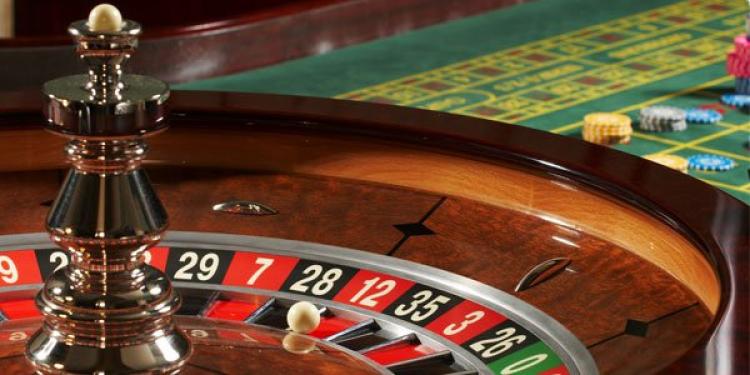How You Can Use Mathematics to Win at Roulette
Posted: February 14, 2014
Updated: October 4, 2017

In the 1970s, a group of physics students collectively won $10,000 by using mathematics to beat the roulette system. So how can mathematics and physics in fact turn the odds in your favor at the roulette table?
When Albert Einstein, the granddaddy of physics, says “No one can possibly win at roulette unless he steals money from the table while the croupier isn’t looking,” it suddenly turns into a game of chance where the odds stacked horribly against you.
However, after a group of graduate students from the University of California Santa Cruz embarked on a mission to use physics to guess the out coming number and managed to earn lots of money, for science of course, playing roulette has got more interesting.
In the US version of the popular casino game, there are 38 numbered slots running from 1 to 36, a zero and a double zero.
Bets can be made either on a specific number, which carries the probability 2.7% of winning, or on a bet with a higher probability, like on red or even, which has the probability of winning at 47.4%.
Playing for odd or evens, red or black, carries a decent enough chance of scoring a win, but the winnings for a bet with a high change you’ll win hardly means big money.
However, the rewards you do get when scoring an individual number is tempting, but it’s one with a very low chance of winning, and then Einstein’s words of wisdom begin to make sense: the only way of winning roulette that way is to actually steal the money.
The students chipped in and got their very own roulette wheel, hooked it up to a camera and an oscilloscope so as to monitor the motion. They also put their knowledge to use by coming up with a formula involving trigonometric functions.
Bet you now wish you had paid more attention to trig now?
The calculations were still pretty tough, even for eggs heads like the Eudaemons, the name the team worked under.
To overcome the mathematical challenges, the Eudaemons came up with a customized computer that takes the data from the roulette wheel and the ball, to give a prediction of the outcome number.
The special computer was a rather nifty design, made to be hidden in a shoe, where the data was inputted by tapping the big toe on a micro-switch in the shoe. The device would send a signal to a vibrotactile output under the shirt.
The signal would vibrate which of the eight octants of the roulette the bet should be placed on, or it would give another option – one where a bet should not be placed.
There was quite a bit of trial and error though, since one of the participants got electric shocks from the solenoid, which had also burned a hole in her skin.
The group managed to rake in $10,000 from their system, but academic hassle and getting burned, literally, caused the group to disband.
Fortunately, the mission for science was successful. The Eudaemons managed to prove there was a statistical way of predicting the place the ball would fall. So how did it work?
In order to get an idea of which slot the ball will fall into, you’ll need the velocity and the deceleration of the ball.
A group of scientists in Hong Kong and Australia, inspired by the Eudaemons’ work, established a relationship between the ball’s ending position and the speed and the relative time the ball is released. Their results showed an increase in odds to 20% from the usual 2.7%.
However, getting a camera into the casino is considered a faux pas, so you need a brilliant memory to make predictions by counting the wheels revolutions.
Sometimes you can increase your odds by finding a roulette table where the ball is released from one side of the wheel.
Because physics depends on constants, using a roulette wheel with the ball being released on one side will help you limit the variables and make a more probably outcome.
If you’re lucky enough to find an old casino with older roulettes, then keep an eye out for a roulette table with a slant. This won’t work with new roulette wheels or mobile casino games, but if you do find one, it can increase your chances of winning.
Since gravity always wins out, with a slant in your wheel, you can make an educated guess of where your ball will land.
Croupiers are trained to spin the ball when they release to avoid getting into a predictable rhythm, this prevents people from timing the situation, but sometimes you can find a predictable croupier.
If you can find a croupier who is predictable, then that will increase the odds in your favor. However, experienced croupiers can usually tell where the ball will land when they release the ball at certain times. So be nice and tip your croupier, and they might take care of you.
Physics can definitely help you increase the odds in your favor, but it’s a tough sell. However, with a little scientific know-how, perhaps you can prove Einstein wrong.
When Albert Einstein, the granddaddy of physics, says “No one can possibly win at roulette unless he steals money from the table while the croupier isn’t looking,” it suddenly turns into a game of chance where the odds stacked horribly against you.
However, after a group of graduate students from the University of California Santa Cruz embarked on a mission to use physics to guess the out coming number and managed to earn lots of money, for science of course, playing roulette has got more interesting.
A game of chance
Roulette is one of the easiest casino games to play, and it’s for that reason the house edge is so high in the game where the croupier spins the wheel and gravity and momentum does the rest.In the US version of the popular casino game, there are 38 numbered slots running from 1 to 36, a zero and a double zero.
Bets can be made either on a specific number, which carries the probability 2.7% of winning, or on a bet with a higher probability, like on red or even, which has the probability of winning at 47.4%.
Playing for odd or evens, red or black, carries a decent enough chance of scoring a win, but the winnings for a bet with a high change you’ll win hardly means big money.
However, the rewards you do get when scoring an individual number is tempting, but it’s one with a very low chance of winning, and then Einstein’s words of wisdom begin to make sense: the only way of winning roulette that way is to actually steal the money.
Using mathematics to beat the system
Ballsiest Casino Cheats:Theoretically, a game of roulette is just a game of numbers, where the chance of hitting each number is around 2%. However, a group of grad students in the 1970s researched how beat the system, and even managed to prove Einstein wrong.
• The remote control roulette ball. In 1973, three French people rigged a roulette table with a tiny radio receiver placed inside a custom-made ball, with the croupier working with them as an insider.
• Tiny hidden camera in a card game. In 2011, a group of baccarat players hid a tiny camera in a cufflink that would record information of the cards as the player cut the deck.
• The wearable card-counting computer. Back in 1972, Keith Taft built a computer to cheat at blackjack.
The students chipped in and got their very own roulette wheel, hooked it up to a camera and an oscilloscope so as to monitor the motion. They also put their knowledge to use by coming up with a formula involving trigonometric functions.
Bet you now wish you had paid more attention to trig now?
The calculations were still pretty tough, even for eggs heads like the Eudaemons, the name the team worked under.
To overcome the mathematical challenges, the Eudaemons came up with a customized computer that takes the data from the roulette wheel and the ball, to give a prediction of the outcome number.
The special computer was a rather nifty design, made to be hidden in a shoe, where the data was inputted by tapping the big toe on a micro-switch in the shoe. The device would send a signal to a vibrotactile output under the shirt.
The signal would vibrate which of the eight octants of the roulette the bet should be placed on, or it would give another option – one where a bet should not be placed.
There was quite a bit of trial and error though, since one of the participants got electric shocks from the solenoid, which had also burned a hole in her skin.
The group managed to rake in $10,000 from their system, but academic hassle and getting burned, literally, caused the group to disband.
Fortunately, the mission for science was successful. The Eudaemons managed to prove there was a statistical way of predicting the place the ball would fall. So how did it work?
The physics of roulette
So will thinking like a physicist give you an edge at the casino? Well, not likely since you’ll need a computer shoved in a shoe, but let’s see how physics can enhance your chance of winning.In order to get an idea of which slot the ball will fall into, you’ll need the velocity and the deceleration of the ball.
A group of scientists in Hong Kong and Australia, inspired by the Eudaemons’ work, established a relationship between the ball’s ending position and the speed and the relative time the ball is released. Their results showed an increase in odds to 20% from the usual 2.7%.
However, getting a camera into the casino is considered a faux pas, so you need a brilliant memory to make predictions by counting the wheels revolutions.
Sometimes you can increase your odds by finding a roulette table where the ball is released from one side of the wheel.
Because physics depends on constants, using a roulette wheel with the ball being released on one side will help you limit the variables and make a more probably outcome.
If you’re lucky enough to find an old casino with older roulettes, then keep an eye out for a roulette table with a slant. This won’t work with new roulette wheels or mobile casino games, but if you do find one, it can increase your chances of winning.
Since gravity always wins out, with a slant in your wheel, you can make an educated guess of where your ball will land.
Croupiers are trained to spin the ball when they release to avoid getting into a predictable rhythm, this prevents people from timing the situation, but sometimes you can find a predictable croupier.
If you can find a croupier who is predictable, then that will increase the odds in your favor. However, experienced croupiers can usually tell where the ball will land when they release the ball at certain times. So be nice and tip your croupier, and they might take care of you.
Physics can definitely help you increase the odds in your favor, but it’s a tough sell. However, with a little scientific know-how, perhaps you can prove Einstein wrong.
Related content
Subscribe
0 Comments












